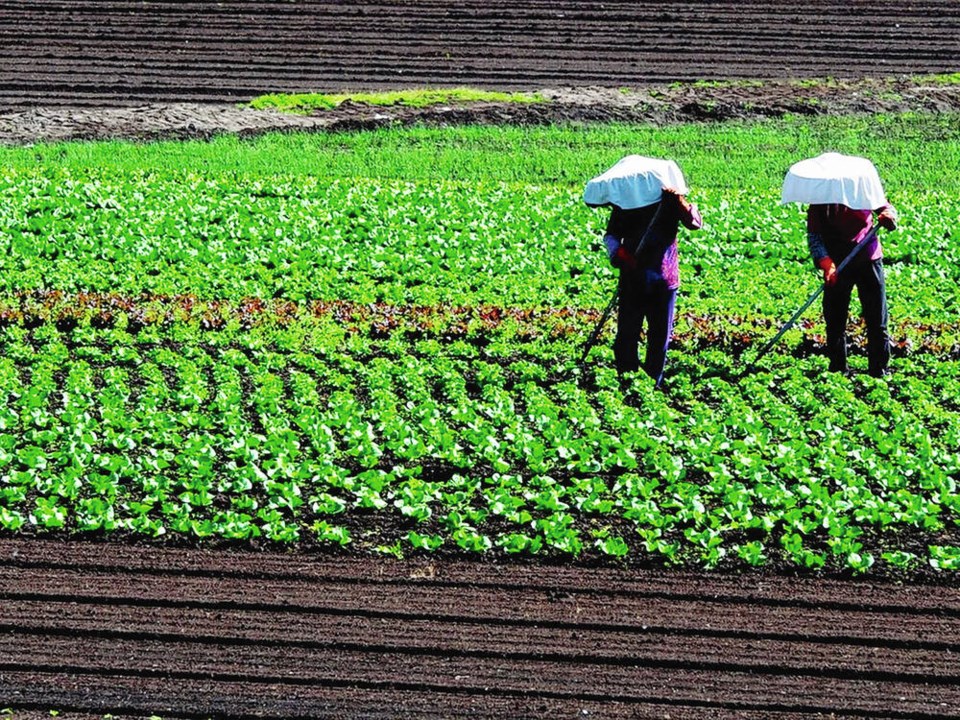VANCOUVER — After working in fields under a beating sun, some B.C. farm workers return home to sweltering housing, says an advocate for seasonal agriculture workers who is calling for better protection against extreme heat.
Raul Gatica, spokesman for the Dignidad Migrantes Society, said he’s asking the federal government to investigate six B.C. farms for not providing workers with ways to cool down during hot weather.
“The problem is not just the need of air conditioners, but also that the employer didn’t implement measures like having cold water, shadows or cold rags at the workplace and during the long working hours,” he said.
As global heat records were broken last week, B.C. data shows extreme heat is making more workers sick.
Between 2018 and 2020, WorkSafeBC accepted an average of 40 claims a year for heat stroke. The number jumped to 115 in 2021, the year of the heat dome, and remained high in 2022, at 81.
WorkSafe figures shows the top sector for heat stress claims last year was transportation and related services, with 21 claims.
Gatica said seasonal, often-migrant, farm workers are particularly vulnerable because they may feel obligated to work in dangerous conditions and might not report illness because they want their contracts renewed.
He recently returned from the Okanagan, where he met farm workers who were working in the sun without access to cold water or shade.
He said some of the workers had asked to start work at 4 a.m. and finish by early afternoon in an effort to avoid the hottest hours of the day. Others had asked their employer to provide fans or air conditioning in worker housing.
“I was there with them in the house and it was definitely very bad conditions,” he said.
Gatica said despite provisions in B.C.’s Workers Compensation Act, “some employers do and some don’t” have a plan for extreme heat. He wants better oversight to ensure workers are protected both on the job and when they return home at night.
Some migrant workers in Ontario have been calling on the provincial government to enact emergency protections for farm workers after the province was hit by a heat wave.
The issue has received more attention in the United States, where a National Institutes of Health report found farm workers are 35 times more likely to die of heat exposure than workers in other industries.
A 2020 study found the number of days farm workers in the U.S. will spend working in unsafe conditions due to heat will double by the mid-century, with some top food-producing counties expected to experience over 30 days of unsafe conditions a year due to climate change.
Comparable Canadian data does not exist, but Climate Atlas of Canada models project Canada’s urban centres will experience a big jump in the annual number of very hot days. By 2051 to 2080, Vancouver could have 13 days over 30 degrees each year, compared to a historical average of one. B.C. cities further inland are often several degrees hotter, including the agricultural hot spots in the Fraser Valley and Okanagan.
A Quebec study that looked at five Canadian provinces, not including B.C., concluded the number of heat-illness claims accepted by workers’ compensation boards by 2050 could increase 73 per cent in an “optimistic” scenario to 113 per cent in a “pessimistic” one.
Suzana Prpic, WorkSafeBC’s senior manager of prevention field services, said employers are legally obligated to ensure the health and safety of all workers, including farm workers, which includes considering the risks associated with working in extreme heat.
While the act does not specify a maximum temperature at which people shouldn’t be working outside, it lists factors that must be considered, including radiant heat, humidity and the intensity of the work being done.
“Our hope is that all workers start their day with a plan from their employer,” she said. A safety plan should include how heat risk will be managed, including work-rest cycles, rotation of work duties from hotter tasks to cooler, and provision of shade and water.
>>> To comment on this article, write a letter to the editor: [email protected]



